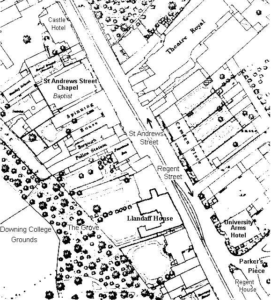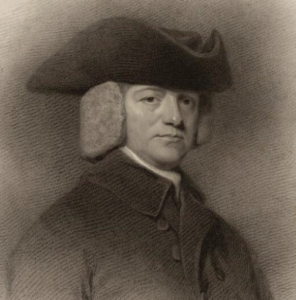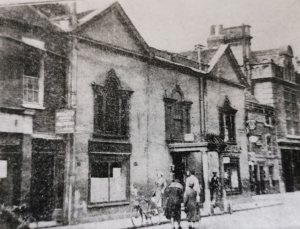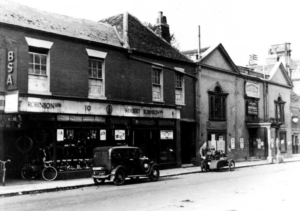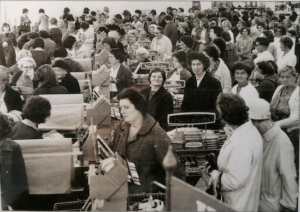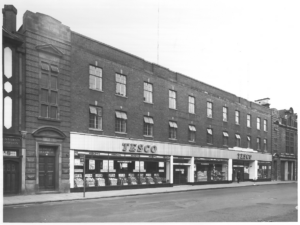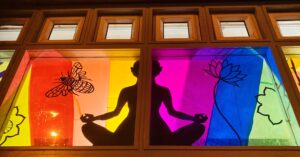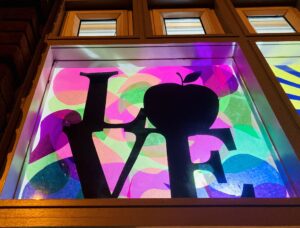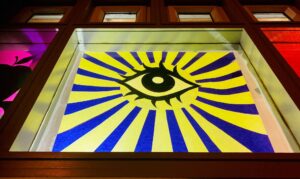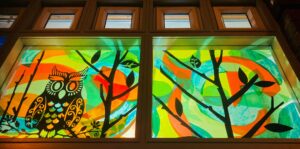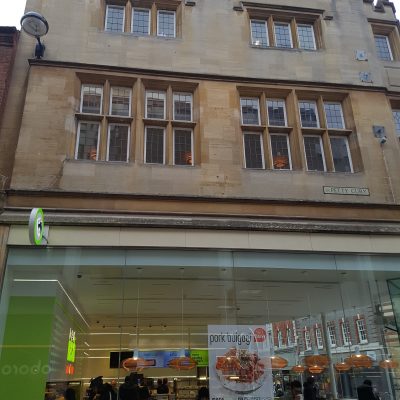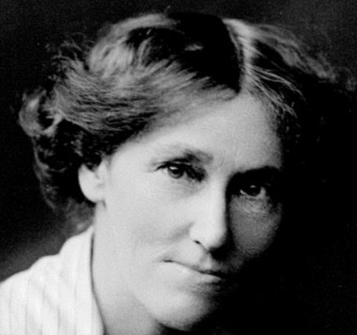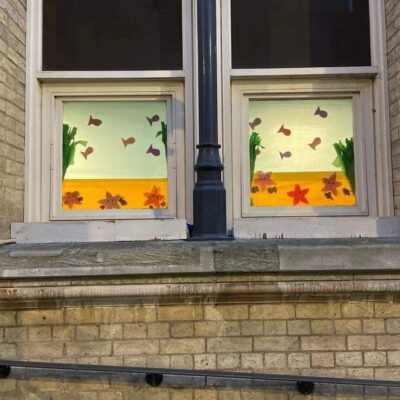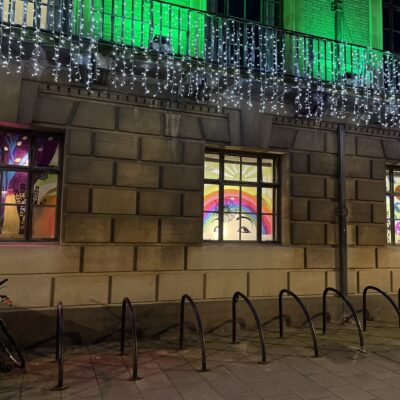Search by topic
- archaeology
- architecture
- bricklayer
- Building of Local Interest
- carpenter
- church
- crime
- dressmaker
- fire
- Great Eastern Railway
- listed building
- medieval
- oral history
- Public House
- Rattee & Kett
- Religious House
- Roman
- scholar
- school
- Then and Now
- tudor
- women
- work
- world war one
- world war two
Search by text
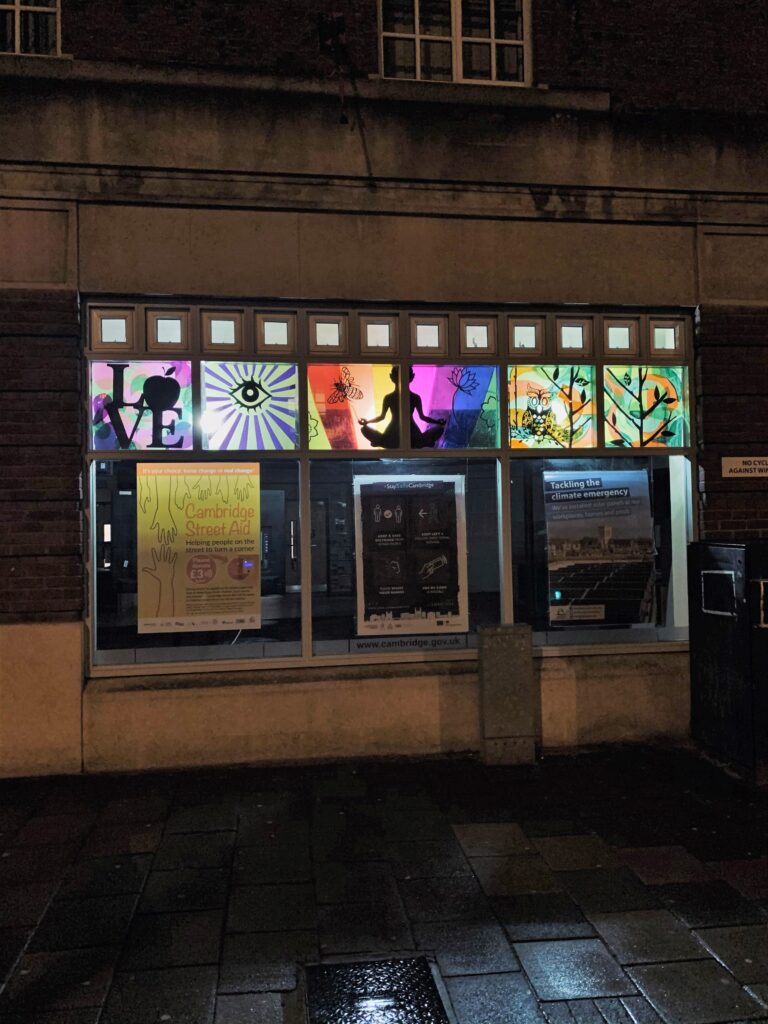 Windows decorated by Oblique Arts. Photos by Lewis Anderson.
Windows decorated by Oblique Arts. Photos by Lewis Anderson.2 – 7 (1/2/3) Regent Street (45 St Andrew’s Street), Llandaff House, Llandaff Chambers, Mandela House
History of 6 Regent Street
A history of Llandaff House can be found:
http://web.ncf.ca/fm120/History/Johnson_Family/LlandaffHouse.html
The notes below are taken from this article originally published in 1984 in the Cambridge Local History Bulletin.
Newton Bosworth was one of a group of friends who formed a Benevolent Society for the relief of the poor in Cambridge in 1801. In 1807 he founded a day school that was initially based at Merton Hall in Northampton Street. Bosworth was later offered in 1817 a property in Regent Street called Llandaff House. The older part of this house (which dated from 1710) had at one time been a tavern bearing the sign “Bishop Blaize”. In 1784, Dr. Richard Watson, Bishop of Llandaff, had acquired the tavern, added an annexe and extra rooms at the back, and turned the whole into his private residence. Not only was he Bishop of Llandaff, but Regius Professor of Divinity in the University as well, besides holding two benefices in other parts of the country. Although a very able man, and in some ways an enlightened one, he was not a popular figure. An epigram circulating at the time ran thus:
“Two of a trade can ne’er agree,
No proverb can be juster;
They’ve ta’en Bishop Blaize, you see,
And put up Bishop Bluster”
1799 Benjamin Flowers, publisher of The Cambridge Intelligencer, was summoned before the House of Lords, for remarks made in the Intelligencer against Richard Watson, bishop of Llandaff, whose political conduct he had censured. After a short hearing he was adjudged guilty of a breach of privilege, and sentenced to six months in Newgate Prison and a fine. Benjamin was married to Eliza née Gould and their daughter was born in Holy Trinity parish, Cambridge 19/4/1803. However there is no evidence of the family having lived in the parish or in Cambridge for any length of time. Eliza Flowers (1803 – 1846) was an artist and composer; she published political songs and music to Hymns and Anthems (1841-6) for South Place Chapel, Finsbury , including settings to words of her sister, Sarah Fuller Adams. See https://freethinker.co.uk/2023/09/celebrating-eliza-flower-an-unconventional-woman/
Llandaff House was eminently suitable for use as a school. Besides that, it was near Parker’s Piece – good for team games – and close to the Baptist meeting of which Bosworth had been deacon now for six years. At the back were fields, part of Downing College grounds, and a rented garden known as ‘the Grove’, where the younger boys could play. Features of the building were the pillared porch, jutting out over the pavement and, inside, a beautiful oak staircase and gallery, as well as panelled rooms.
Bosworth carried on the school – now dignified by the title “Llandaff House Academy” – for six years. By 1823, the burden of the work appears to have become too much for him. The boarders were given up and the Academy reverted to a day school instead. Early that Summer, he announced that he would shortly be removing to London and that the school was being taken over by his former assistant, Mr. William Johnson (1793-1871). The property thus acquired remained in the hands of the Johnson family for close on 80 years.
The boarding school was re-established and, by the 1830s, there is evidence to show that the number of pupils had risen to about fifty. In 1830, Johnson delivered a lecture to friends and supporters of his academy explaining his system of education. This was afterwards published in the form of a pamphlet entitled Thoughts on education. The pamphlet contains an advertisement showing that the basic cost of board and tuition was still 30 guineas per annum. However, this figure was doubled for ‘parlour boarders’, – pupils living with the family, whilst the charge for private pupils, including a separate study and bedroom, was 80 guineas per annum.
The census returns of 1851 show that the academy at that time took in 25 borders. There were probably at least as many day boys as well. Most of the boarders – about two-thirds – came from towns and villages in Cambridgeshire and Huntingdonshire; the remainder from places slightly further away. A list of old boys – “Old Johnsonians” as they called themselves – drawn up in 1903, shows a great variety of backgrounds and occupations. Farmers and small business men seem to predominate, but there is also a fair sprinkling of professional men – clergymen (both Anglican and nonconformists), doctors, barristers, solicitors, schoolmasters, and even a handful of Cambridge University dons. Among the names to occur are those of Frederick and Maurice Macmillan, sons of Daniel Macmillan, the latter Maurice being father of Harold Macmillan (now Lord Stockton) a former Prime Minister.
William Henry Farthing Johnson (WHF) served as headmaster of Llandaff House School (as it was afterwards styled) for 42 years. Tall and well-built, he entered fully into the lives of his pupils, sharing their games and pastimes and playing cricket with them when opportunity occurred. He was active in young people’s work of all kinds. One of the founders of the Cambridge Y.M.C.A., he served as its first President in 1852. He became the first President of the Cambridgeshire Sunday School Union. At the Baptist church, he was deacon (later senior deacon) for 45 years. In public affairs, he served as a Justice of the Peace.
In 1875, The Post Office Directory of Cambridgeshire lists:
Johnson, Wm. Hy. Farthing, school for gentlemen, 2 Regent st
At the age of sixty-eight (this was in 1893), WHF felt it time to retire. The boys school was given up and his eldest daughter, Harriet, with the help of her cousin, Janet Bowes, opened a mixed preparatory school for younger children. It was to this school that Maynard and Geoffrey Keynes went as youngsters in the 1890s. Their mother, Mrs. Florence Keynes (in her book, Gathering up the threads, p.65) recalls the feuding that went on with certain errand boys in their journeys across Parker’s Piece!
In July 1901, the old man – now seventy-six years of age – died. The reporter who wrote his obituary in the local paper says ‘quite a number of well-known public men in the town and country passed through his hands, and the influence of such a personality has repeatedly shown its effect in their lives; a large percentage of the yeoman class in the country will lament the loss of their old master’.
In 1903, Llandaff House was sold to Mr. Herbert Robinson (father of David Robinson, the multi-millionaire) who converted part of it to his cycle business. The older portion, which had been let off some years previously as offices and re-named Llandaff Chambers, was left as it was. In 1932-33, the entire property was demolished and replaced by the buildings we have today. The monogram HR above the new ‘Llandaff Chambers’ identifies the spot upon which the old tavern once stood.
1851 Llandaff House [School]
William Johnson, head, 58, classical teacher, b Hunts
Sophia, 50, b Wilts
William, 25, teacher of languages, b Cambridge
Elizabeth Berry, family, 40, housekeeper, b Sussex
Elizabeth Detter, cook, 30, b b Cambs
Jane Smith, 28, housemaid, b Essex
Alex Warrington, footman, b Cambridge
Thomas Kempston, assistant, 27, teacher of languages, b Ely
as well as 27 boy boarders aged between 7 and 17 nearly all from Cambridgeshire and local counties.
1861
1 Regent Street:
Mary Anne Barker, 30, school mistress, b Cambridge
45 St Andrew’s Street:
John S Wright, 54, tailor employing 5 men, b Stretham
1871 (3)
Harriett Johnson, 45, schoolmaster’s wife, b Cambridge
Harriett, 16, scholar teacher, b Cambridge
Fanny E, 15, scholar teacher, b Cambridge
George W, 13, scholar, b Cambridge
William E, 12, scholar, b Cambridge
Alice, 10, scholar, b Cambridge
Augustina, 6, scholar, b Cambridge
Reginald B, 3, b Cambridge
Henry Mason, assistant, 35, undergraduate assistant, b Sussex
Francis Cooper, 18, assistant master, b Cambridge
Hannah Pan, 27, cook, b Norfolk
Elizabeth Handley, 26, housemaid, b Landbeach
Mary Silver, 31, nursemaid, b Essex
Scholars: 19 listed on census
1881 (3/2) School
William H F Johnson, 55, schoolmaster, b Cambridge
Harriet, 51, b Cambridge
Harriet M, 26, teacher, b Cambridge
Alice, 20, student, b Cambridge
William E, 22, student undergraduate, b Cambridge
Archibald G Munro, boarder, 26, undergraduate, b Yorks
Paul K Lyon, 23, boarder, undergraduate, b Yorks
Hugh W Sharrard, boarder, 18, undergraduate, b Worcs
Thomas M Chivers, boarder, 15, scholar, b Histon
Francis R Sayer, boarder, 12, scholar, b Suffolk
Arthur Sayer, boarder, 11, scholar, b Suffolk
Ernest R F Bailey, boarder, 15, scholar, b Ely
William H Wood, boarder, 15, scholar, b Australia
William F Parker, boarder, 12, scholar, b Essex
Hubert W Doggett, boarder, 14, scholar, b Herts
John Price, boarder, 16, scholar, b Suffolk
Walter Price, boarder, 14, scholar, b Suffolk
Corenda Smith, servant, 22, housemaid, b Little Swaffham
Mary Watts, 24, cook, b Bottisham Lode
1891 (2)
Llandaff House
1901 (2)
William Johnson, retired schoolmaster
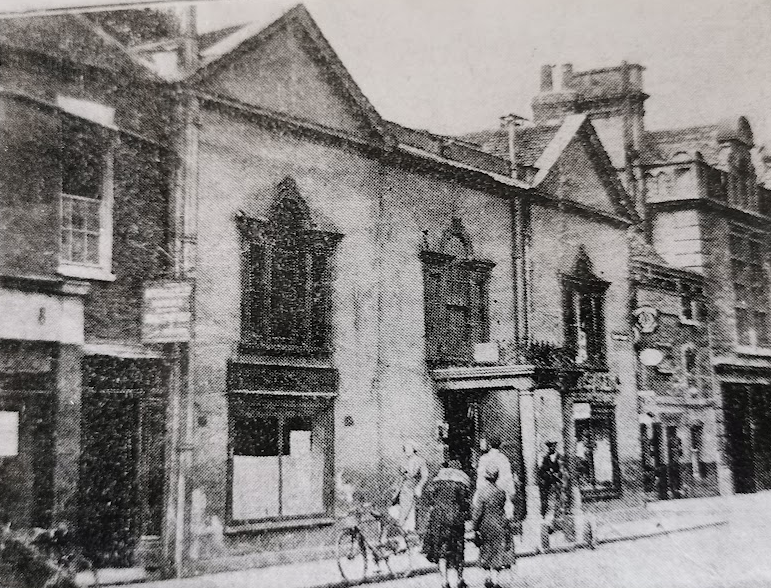
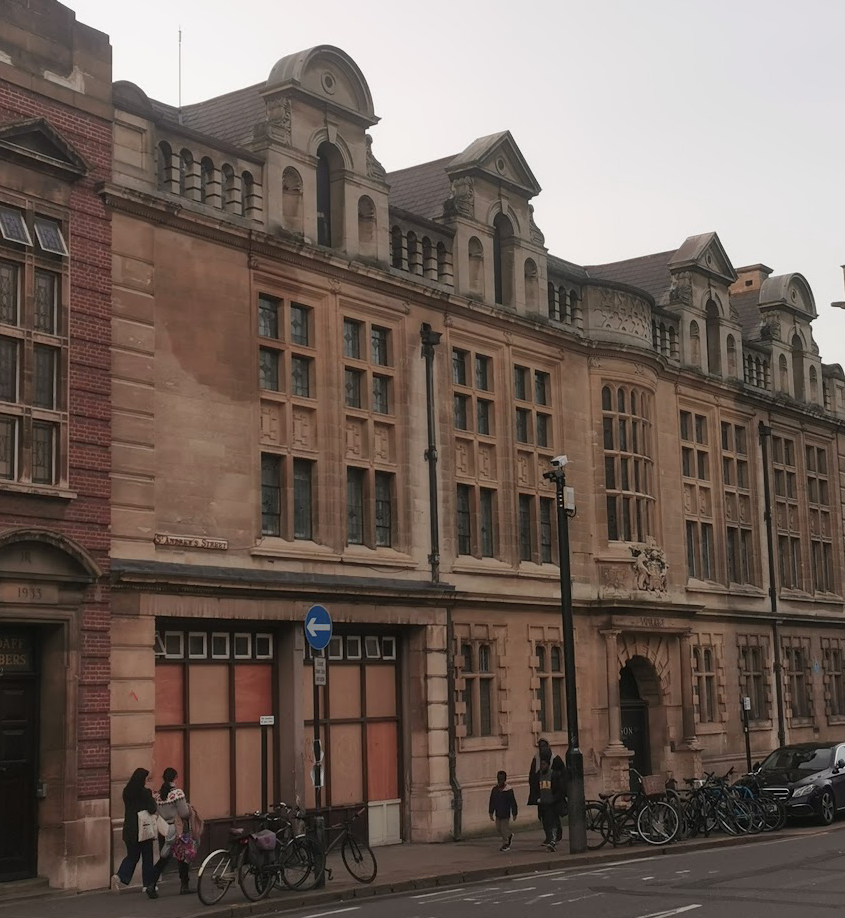
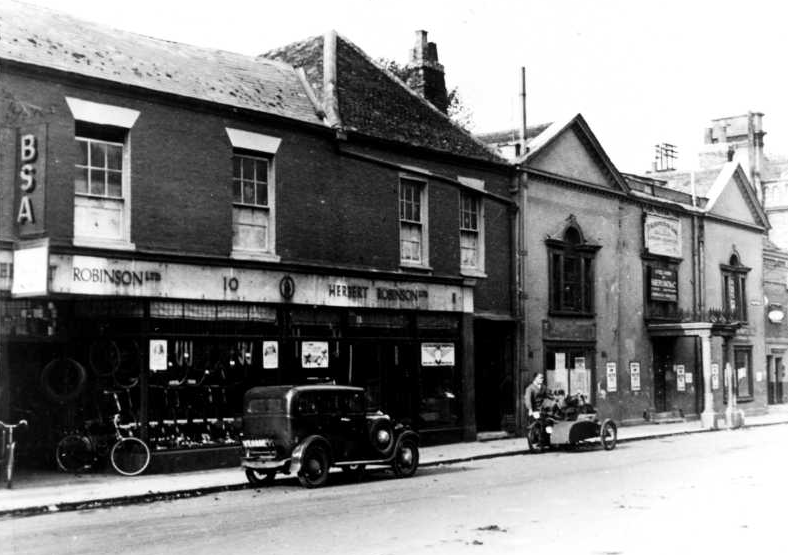
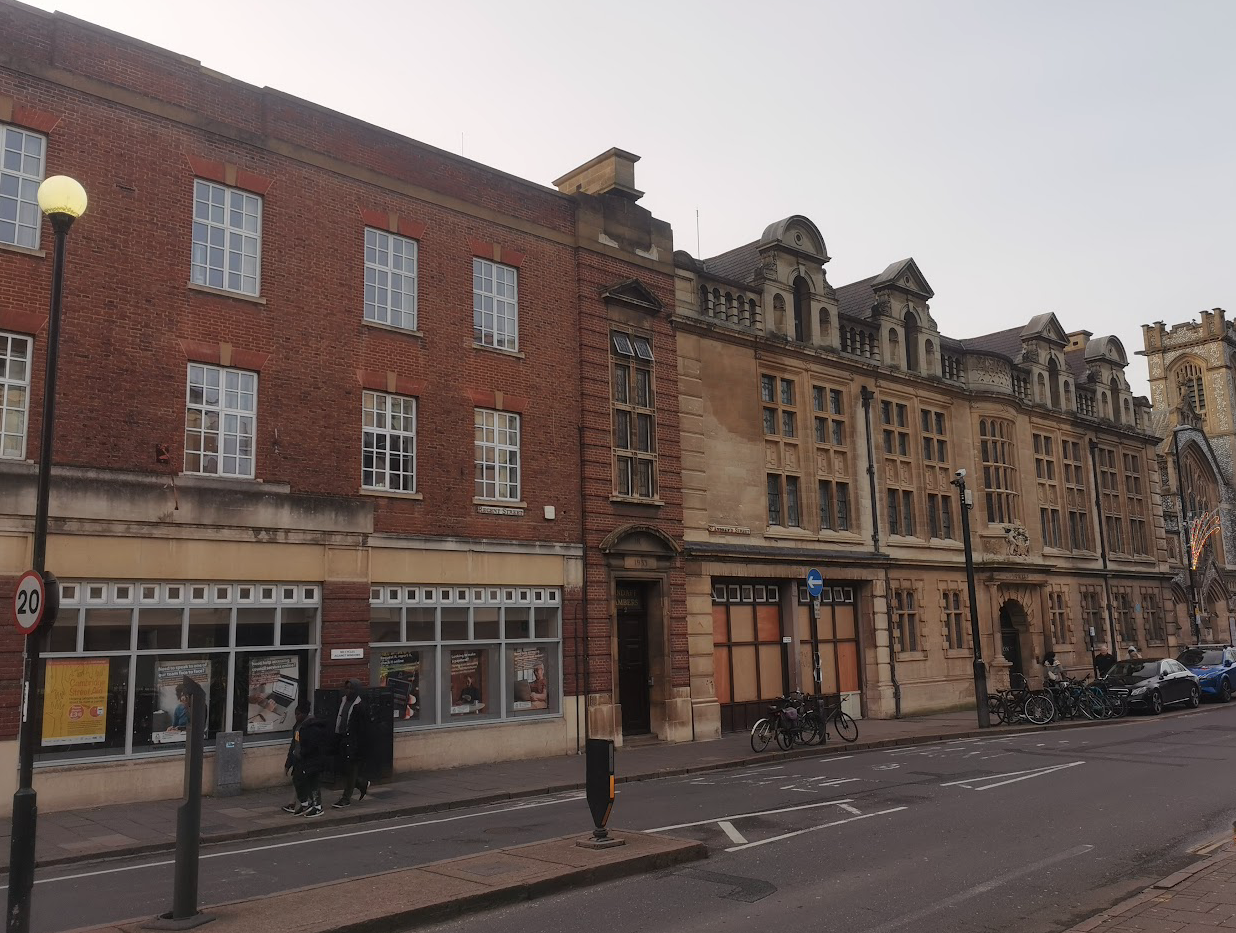
1904
Hugh Benson was ordained into the Catholic Church on 12th June 1904 and he was immediately sent to England where it was arranged he would pursue a one year course in theology under the supervision of Mgr Arthur Barnes, the Catholic Chaplain to the University of Cambridge, and would reside in the Chaplaincy, then at Llandaff House in Regent Street. (Catholics in Cambridge ed.Nicholas Rogers)
1911
(45 St Andrews Street, Alice Saunders tea shop
Llandaff Chambers
(6) Rev. Arthur Barnes, Llandaff House
1913
2 Regent Street, Mrs Saunders
Llandaff House / Llandaff Chambers
(4) Regent Street
(6) Llandaff House
Rt. Rev. Mgr. A S Barnes
1932 – 1933
There was a major building project on the site for Herbert Robinson’s motor business. There was a big ceremonial opening at which famous vehicles were shown.
1962
Herbert Robinson School of Motoring
Llandaff Chambers
(5a) London and Manchester Assurance
(6) Employers Liability Insurance Corporation Ltd
(7) Premier Motor Policies
The Herbert Robinson premises failed to find a buyer at auction and Tesco acquired the site.
1964
Herbert Robinson, motor cars and school of motoring
Sir David Robinson’s example to those who made their fortunes in Cambridge
Tescos opened its first store in Cambridge here in 1964
Current:
Mandela House
Here is a link to the event page online for information about the event:
https://www.windowwanderland.com/event/cambridge-2021/
Contribute
Do you have any information about the people or places in this article? If so, then please let us know using the Contact page or by emailing capturingcambridge@
License
This work is licensed under CC BY-NC-SA 4.0








